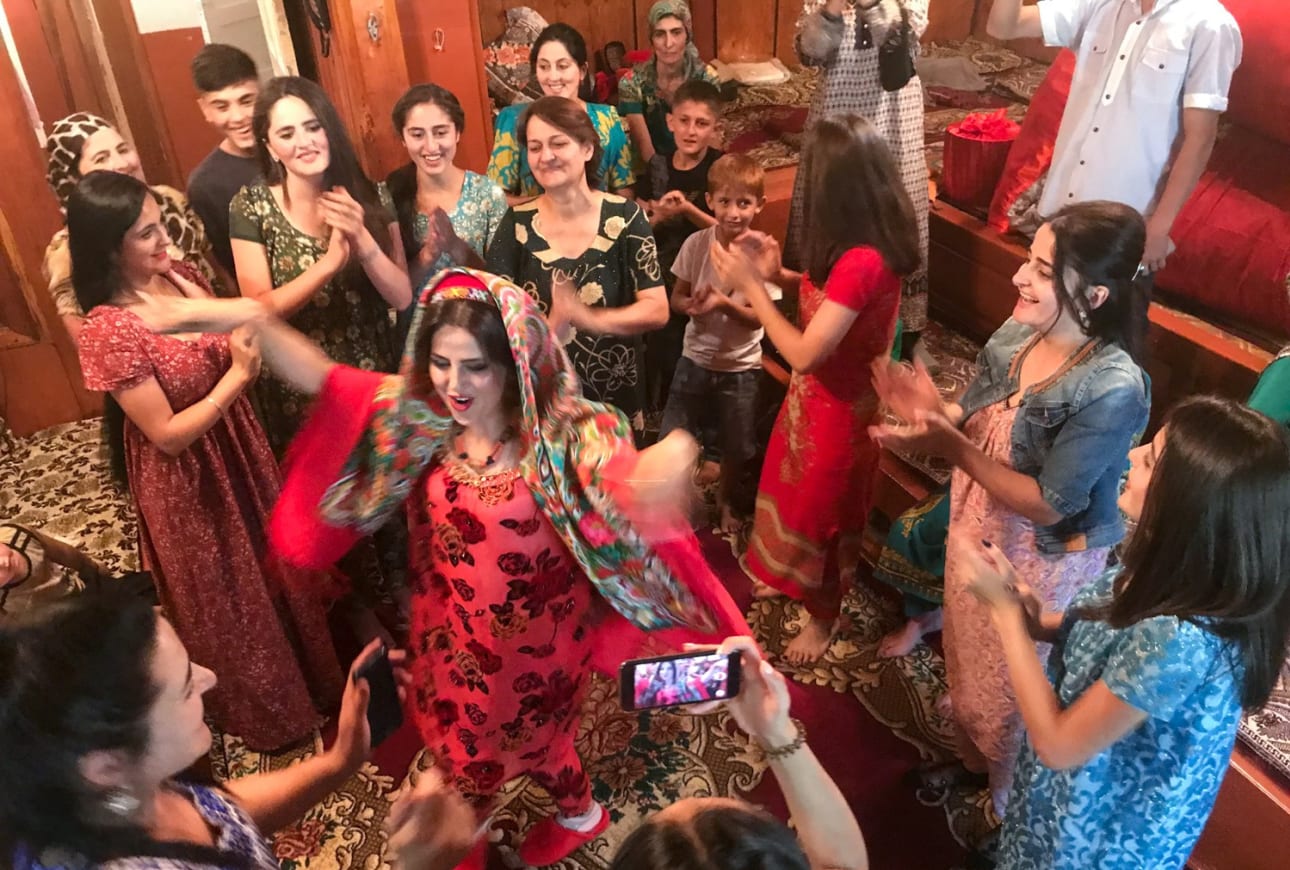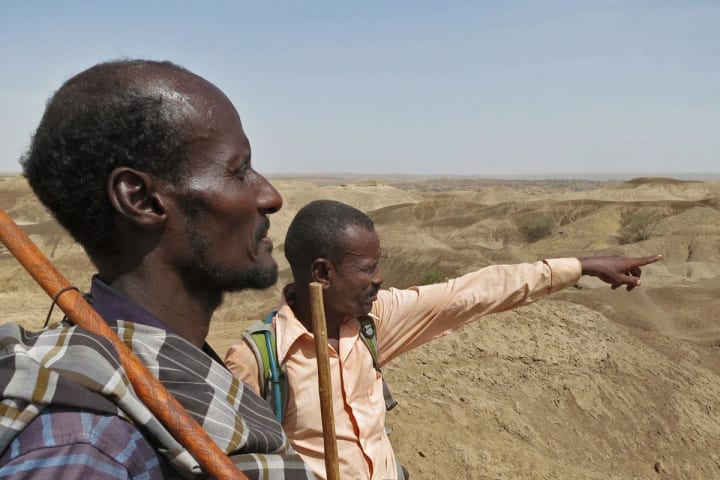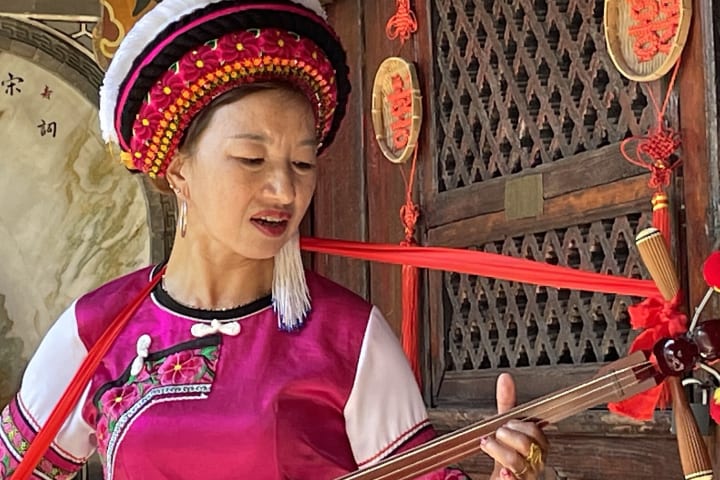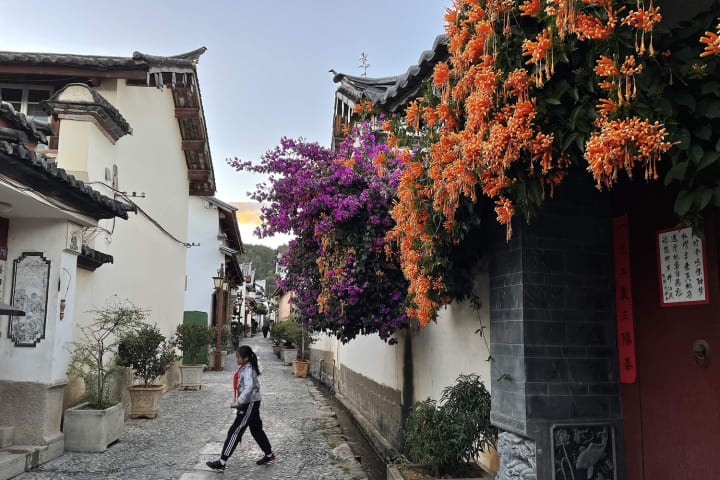IDEA SET
IDEA SET
Exploring Culture with the Out of Eden Walk
Exploring Culture with the Out of Eden Walk
Explore diverse cultural stories with National Geographic Explorer and journalist Paul Salopek. Analyze stories of cultures from around the world and challenge students to identify stories from their own communities.
Grades
5 - 12
Subjects
English Language Arts, Storytelling, Geography, Anthropology, Religion

Paul Salopek
National Geographic Explorer Paul Salopek is walking 24,000 miles across the planet, following the path of early human migration from East Africa to South America and capturing local stories as he travels. This slow journey across the Earth, which he calls the Out of Eden Walk, gives him a human perspective on the major stories of our time. You can introduce students to Paul’s walk with this short video and access all of the stories from Paul and his walking partners here.
This idea set provides tools to examine stories about culture from the Out of Eden Walk with students. It is one of a series of Idea Sets exploring important ideas and themes addressed by stories from the Out of Eden Walk. In each of these Idea Sets, you will find resources from the walk along with classroom activities and learning tools to support your exploration of these concepts with your students.
This idea set is part of a collection called Out of Eden 10th Anniversary: Culture.

Building Background Knowledge: Culture
Before exploring dispatches from the Out of Eden Walk, take some time to activate prior knowledge and build background knowledge on culture. Introduce your students to key ideas about culture with a quick-write using one or more of the following questions:
- What is culture? What are some important characteristics of culture? What are some important characteristics of your own culture? Why should we study different cultures?
Ask students to pair-share, comparing their answers and finding similarities and differences.
Use the Key Concepts tool to have students define and provide examples of important ideas and terms that they will encounter as they discuss the Out of Eden Walk materials. Terms could include:
- Culture
- Traditions
- Customs
- Rituals
- Belief System
- Artifacts
- Ethnicity
- Cultural Identity

Stories of Culture from the Out of Eden Walk
Paul Salopek, his walking partners, and other collaborators have collected stories about culture from perspectives along the Out of Eden Walk. The following stories spotlight the diversity of cultures they have encountered. Many of these stories show how cultures in a place have persisted, changed, or mixed over time.
The articles, regular dispatches written by Paul throughout his journey, are available at several reading levels. There are also multimedia resources from the walk: “milestones” are snapshots Paul records every 100 miles on the trek. These contain videos, panoramic photographs, and brief interviews with the first person he encounters at each location. Walking tours include interactive maps with photos and narration that guide readers through key locations along the route. Consider assigning different articles to groups of students in your class for analysis and discussion. Students can locate the regions Paul and his walking partners visit using National Geographic Mapmaker. Other cooperative learning activities such as stations and jigsaw would also work well for exploring these resources (more specific activities and tools are included in the next section).
- Bush RSS Feed: (article) Afar herders use dagu, a news sharing system, to share information with each other on the trail. These quick conversations can help herders locate water and alert them to dangers.
- Walking Tiblisi: (walking tour) A walking tour of historic sites in Tibilsi, the capital city of Georgia. Situated at the crossroads of Europe and Asia, Tbilisi is a multicultural city with complex history and diverse architecture.
- A Woman at Last: (milestone) In the gender segregated countryside of Uzbekistan, Paul has difficulty finding women willing to be interviewed. Walking partner Oybek Ruzmetov finally finds a woman who agrees to answer questions by misleading her to believe that the interview is for Uzbek television.
- Cocoon of Days: (article) Traditional silk weaving is a process that requires patience and skill. Paul shares the history of silk cultivation and visits the last remaining center in Uzbekistan where silk fabrics are made using traditional methods.
- Islam in Hiking Sandals: (article) Two female walking partners, part of the very first group of females in their country to become trained hiking guides, lead Paul through a rugged, mountainous region in Tajikistan. One of the guides invites Paul to her traditional Pamiri wedding.
- Where the Language of Love—and Everything Else—Is Song: (article) In Shilong, China the Bai people use improvised singing as an everyday form of communication and perform songs at an annual festival. Villagers, including a community leader and a farmer, are helping to preserve Bai culture through folk music.
- A Walking Partner Uses Lessons of the Deep Past to Guide Him Home (By Yang Wendou): (article) Outdoor guide Yang Wendou accompanies Paul through a mountain trail in China and appreciates the connections they make through sharing their cultures. Wendou seeks out traditional Chinese medicine to heal a foot injury.
- Sword Gate Pass: (milestone) A strategic military pass and fortress in the mountains of China’s Sichuan Province has become a scenic tourist attraction.
- A Surprise Wedding: In this chapter from the Out of Eden Walk podcast, Paul Salopek and walking partner Zhang Mei remember being invited into a wedding among people of the Mosuo ethnic group as surprise guests.
- TikTok in the VIllage: In this podcast chapter, Paul Salopek and walking partner Zhang Mei reflect on how technology connects people across geographies and cultures.

Exploring Culture with the Out of Eden Walk
As your students explore the Out of Eden Walk, use the Learning Tools below to look more closely at what these stories can reveal about culture.
- Use the See, Think, Wonder Learning Tool with the “Sword Gate Pass” milestone, a location from the Walking Tiblisi walking tour, or a striking image from one of the articles. You may want to assign different images to different student groups, then have groups share. Collect student questions and categorize them to identify topics for more exploration.
- Break students into small groups, assigning each group an article to read - or a podcast to listen to - and discuss. Have students use the Save the Last Word for Me discussion protocol to examine the source closely. As they read or listen, ask them to choose their passage based on what it reveals about the culture it describes and the way the people relate to their culture.
- Conduct a structured group discussion with your students to analyze the links between stories. Use the Socratic Seminar format from the Conducting Powerful Conversations Learning Tool to help students think critically about and make connections between the varied cultural stories from the Out of Eden Walk and other resources you may be using in your classroom. Use the guiding questions below to begin the discussion. Encourage students to speak to each other and use examples from their texts:
- What was the most surprising thing you learned from these stories? Why did that surprise you?
- What are some of the similarities between the stories of culture we have seen? What are some of the differences?
- How would you describe the role traditions and customs play in these stories?
- Based on these sources, how would you say culture has stayed the same over generations? How has it changed?
- How have the stories of culture in the Out of Eden Walk changed the way you think about cultures in your community? Why has this changed?
You may want to “fishbowl” your classroom discussions to allow smaller groups to discuss while the larger group observes. See the Learning Tool for more details on this practice.

Extensions: Exploring Culture in Your Community
Let your students become Explorers! Connect the stories of culture from Out of Eden Walk to stories of culture in your own community.
- Work together as a class to develop a set of interview questions that you would want to ask about a person’s cultural identity and practices. Consider the questions that arose in earlier activities. Then, use the Oral Storytelling: Interviews Tipsheet to help students interview people in their lives in order to discover how their cultural identity has been shaped over time.
- Create a walking tour of your community with stops that highlight the diversity and expression of cultures in the world around you. Use National Geographic Mapmaker to print a map of your community and chart a walk with different stops.
- Read stories from the Out of Eden Walk HomeStories project and select three to four stories that highlight aspects of culture to explore more deeply. Encourage students to choose from a variety of regions using the HomeStories map. They can use thinking maps to compare and contrast the cultural elements shared in various stories, identifying similarities and differences among the responses. In small groups, students can share their reflections on the HomeStories they selected. Students can also create their own HomeStories as a possible home extension (requires an original photo).
Media Credits
The audio, illustrations, photos, and videos are credited beneath the media asset, except for promotional images, which generally link to another page that contains the media credit. The Rights Holder for media is the person or group credited.
Editor
Text Levels
Web Producer
Instructional Designer
With help froms
Last Updated
September 17, 2024
For information on user permissions, please read our Terms of Service. If you have questions about how to cite anything on our website in your project or classroom presentation, please contact your teacher. They will best know the preferred format. When you reach out to them, you will need the page title, URL, and the date you accessed the resource.
Media
If a media asset is downloadable, a download button appears in the corner of the media viewer. If no button appears, you cannot download or save the media.
Text
Text on this page is printable and can be used according to our Terms of Service.
Interactives
Any interactives on this page can only be played while you are visiting our website. You cannot download interactives.